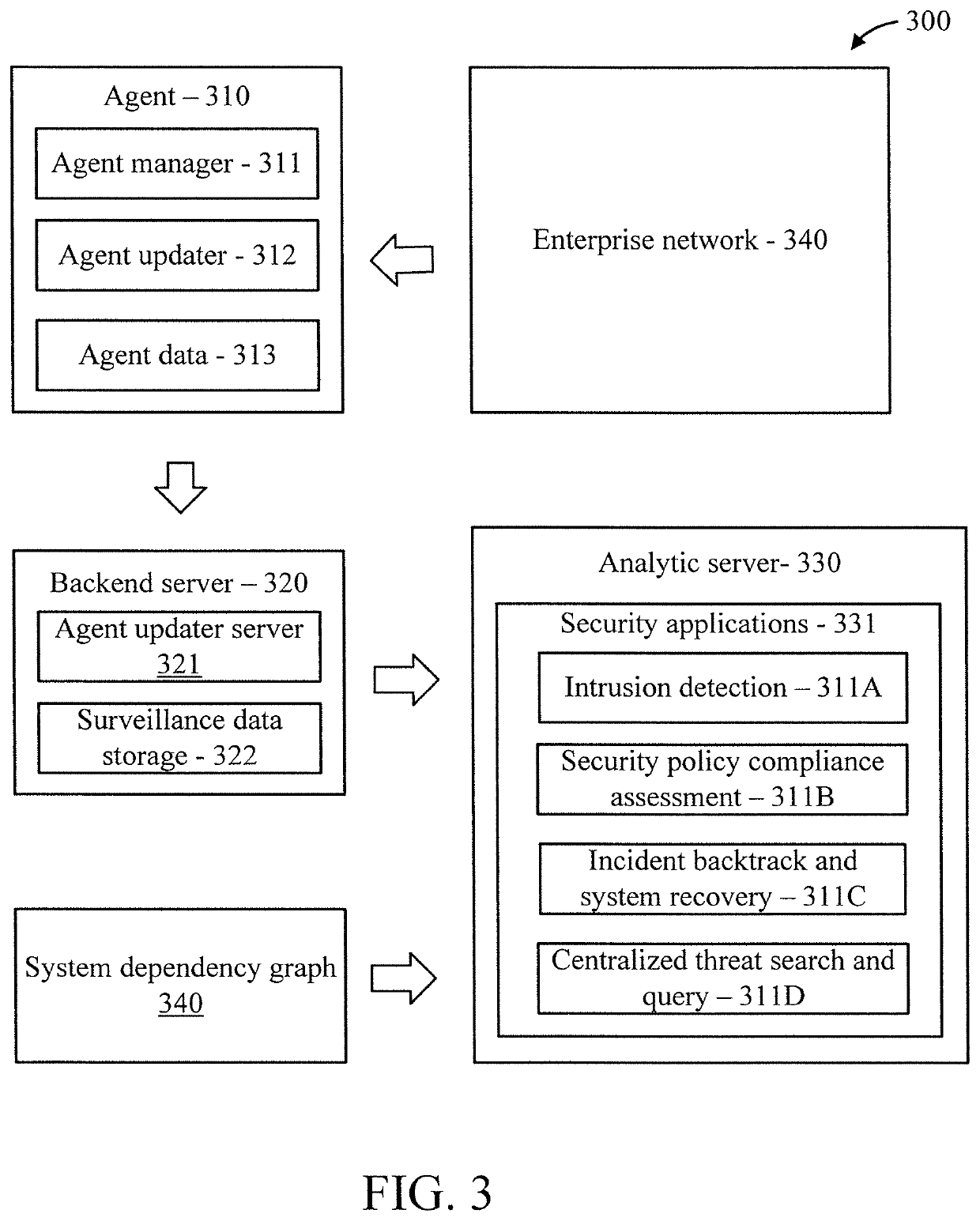Structural graph neural networks for suspicious event detection
a neural network and event detection technology, applied in the field of artificial intelligence, can solve the problems of inability to determine anomalous edges by the graph, complex dynamic graphs, and more difficult in two perspectives
- Summary
- Abstract
- Description
- Claims
- Application Information
AI Technical Summary
Benefits of technology
Problems solved by technology
Method used
Image
Examples
Embodiment Construction
[0016]In accordance with embodiments of the present invention, systems and methods are provided for structural graph neural networks for suspicious event detection.
[0017]Embodiments of the present invention are particularly suited to dynamic graphs. A dynamic graph is a graph in which the size and volume dynamically change along a time axis.
[0018]To tackle these challenges in dynamic graph anomalous edge detection, a structural graph neural network framework is proposed. A main idea of detecting anomalous edges in dynamic graphs is to learn changing structure centered on the target edge to be detected in a given time window and determine the category of the target edge based on the changing structure.
[0019]Compared with anomaly detection in statistic graphs, dynamic graphs are complex and challenging in at least the following two perspectives. First, the anomalous edges cannot be determined by the graph from a single timestamp. The detection procedure must take graphs from the previ...
PUM
 Login to View More
Login to View More Abstract
Description
Claims
Application Information
 Login to View More
Login to View More - R&D
- Intellectual Property
- Life Sciences
- Materials
- Tech Scout
- Unparalleled Data Quality
- Higher Quality Content
- 60% Fewer Hallucinations
Browse by: Latest US Patents, China's latest patents, Technical Efficacy Thesaurus, Application Domain, Technology Topic, Popular Technical Reports.
© 2025 PatSnap. All rights reserved.Legal|Privacy policy|Modern Slavery Act Transparency Statement|Sitemap|About US| Contact US: help@patsnap.com



